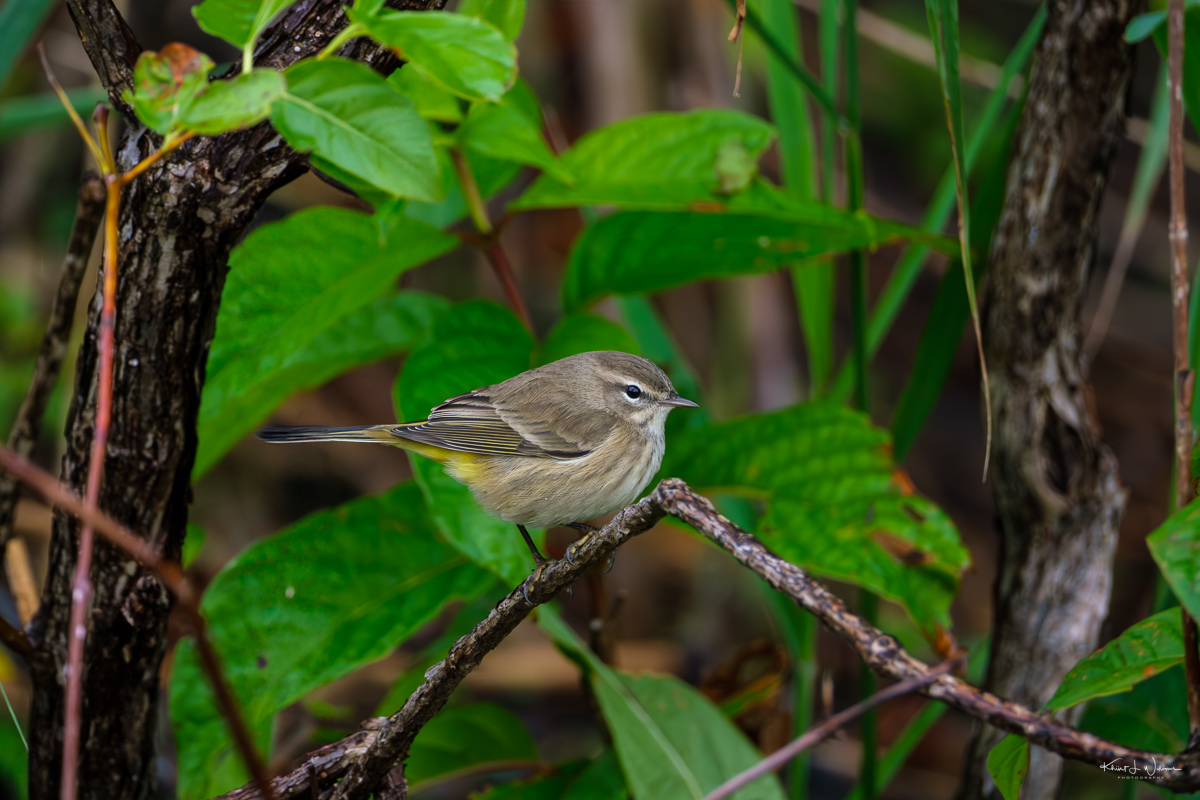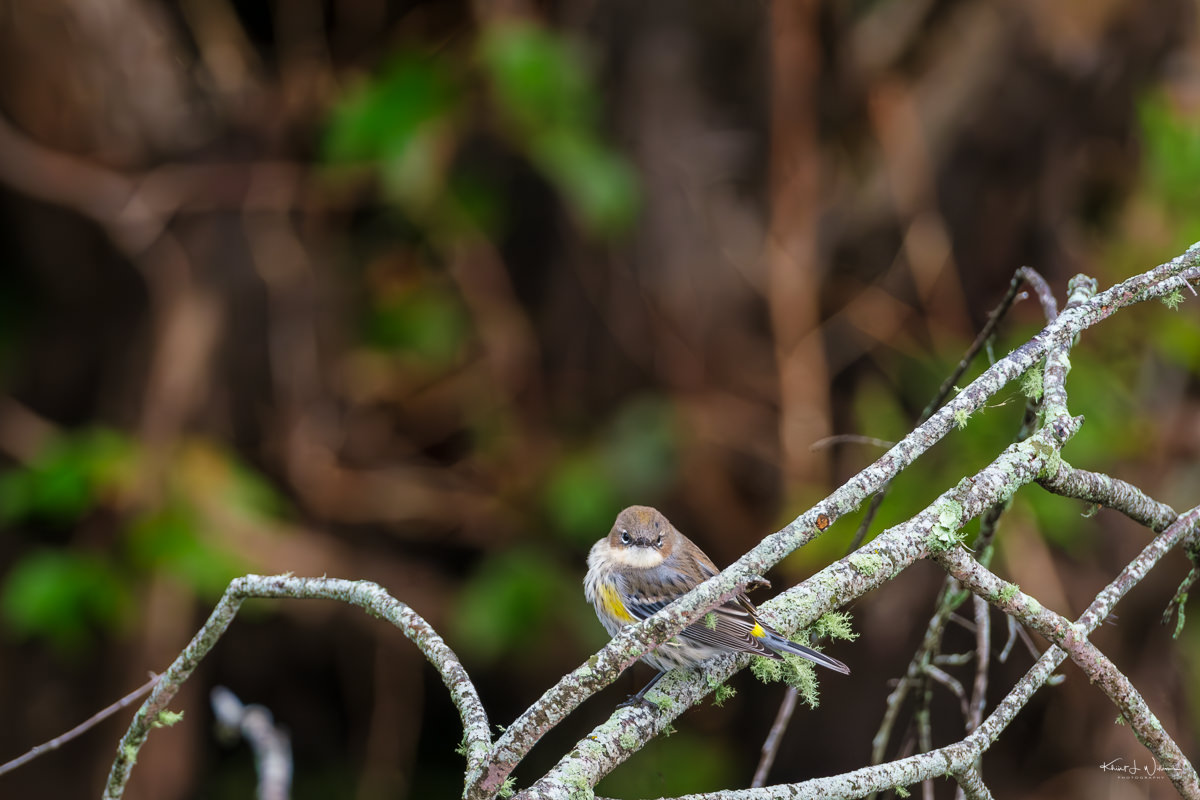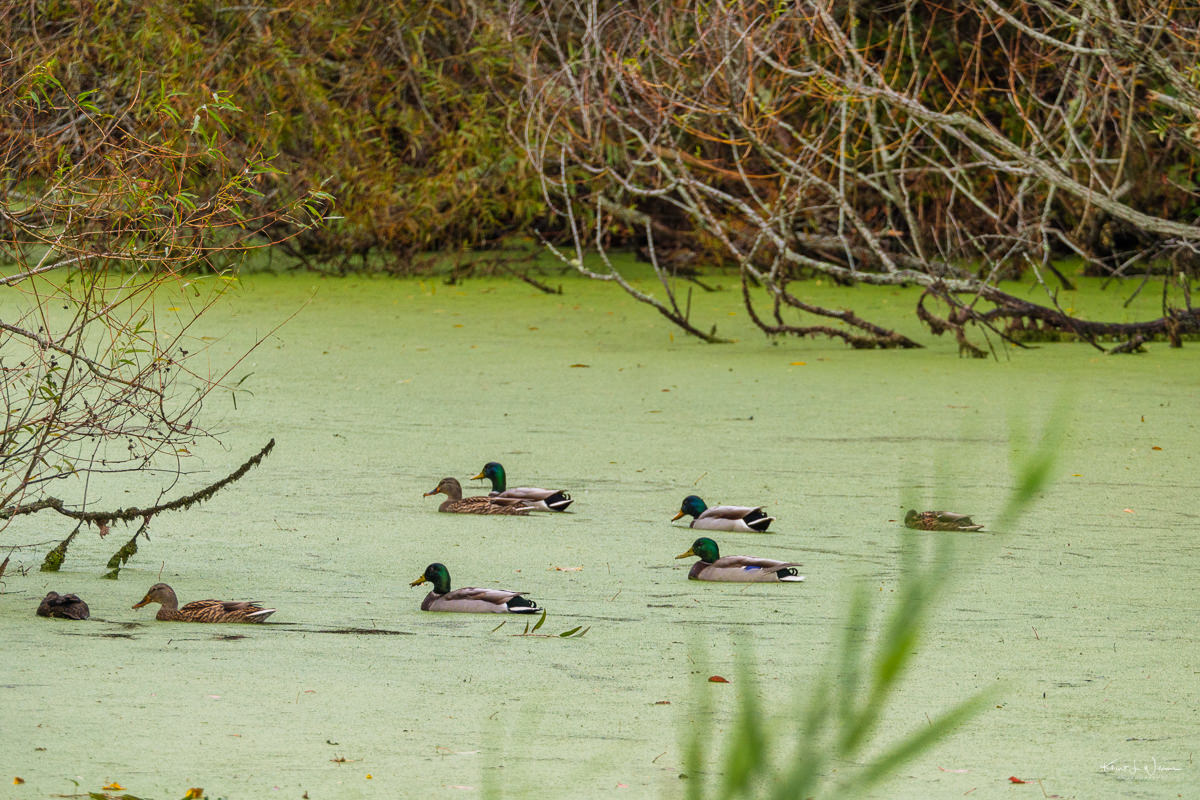Tag: West Cape May
Yellow-rumped Warbler (Myrtle)
My first visit to The Beanery and my first time seeing this warbler.
After walking for 90 minutes on my field trip around The Beanery, I still had no bird photographs. Despite the group's enthusiasm, I started to feel that I had wasted my time. I wanted to quit the tour, leave the group, and return to the car. However, I didn't relish telling Bhavna we had driven two hours in the rain to return home empty-handed. We heard trills and high-pitched chips as we approached a pond near one of the farm buildings. We could see rapid movement in the vines growing on the other side of the pond. Someone called out, with a surprisingly disappointing voice, that we were looking at Yellow-rumped warblers. Finally!
The Yellow-rumped Warbler (Setophaga coronata) is a well-known bird species. Yellow-rumped Warbler species exhibit sexual dimorphism, meaning males and females have distinct appearances. While editing my photos, I realised that I had photographed females only. Female Yellow-rumped Warblers are referred to as "Myrtle."
Like most warblers, Yellow-rumped warblers are primarily insectivorous during the breeding season, feasting on insects and other invertebrates. Pond flies were buzzing around the pond as I photographed the birds hopping between the leaves of the thick vines and the branches of the dead shrubs near me.
The Yellow-rumped Warbler plumage provides camouflage in various environments where the warbler lives. During the breeding season, Myrtle females have grayish-olive upperparts with streaks on their back and wings. Their throats and undersides are pale yellow. However, the prominent feature of Yellow-rumped Warblers is the yellow patch on their rump. The colour is more subdued in females than males but still noticeable.
After the early morning disappointment, seeing these Yellow-rumped Warblers in their natural habitat was rewarding.
Cape May Fall Birding Festival
The Cape May Fall Birding Festival was on my to-do list for years.
This year, I finally could attend the Cape May Fall Festival. The Cape May Fall Festival has been on my to-do list for several years, but health issues (between 2018 and 2019) and the global pandemic put my plans on the back burner. Last year, the dates of the festival overlapped with the dates of Diwali. Bhavna is Hindu, and the religious festival is the year's highlight for our family and extended family.
I registered for the 7:30 AM field trip at Rea Farm. The Rea Farm, affectionately known as "the Beanery" among birding enthusiasts, sits on the east side of Bayshore Rd, nestled between 6th and Stimpson Ave in West Cape May. It is one of the last operational farms on the bay side of the lower Cape May peninsula. With Pond Creek Marsh as its neighbour, "the Beanery" has a diverse ecosystem featuring wet woods, farm fields, weedy edges, and farm ponds as habitats for warblers, passerines, finches, and sparrows. My hopes were set high that I would see warblers.
Access to this private property is possible through NJ Audubon, either as part of the festival, during Cape May Bird Observatory (CMBO) scheduled walks, or through a permit with a current membership in NJ Audubon or Cape May Bird Observatory.
Bhavna insisted on accompanying me, concerned about me driving alone in the early morning and wanted to provide some company for the two-hour drive. She also offered to drive us home if I was tired after the walk. We left the house around 5 AM. Bhavna slept while I drove in the darkness on the Garden State Parkway. We arrived in West Cape May around 7 AM for check-in at The Grand Hotel's Wicker Room. From there, it was a short five-minute drive to the Rea Farm.
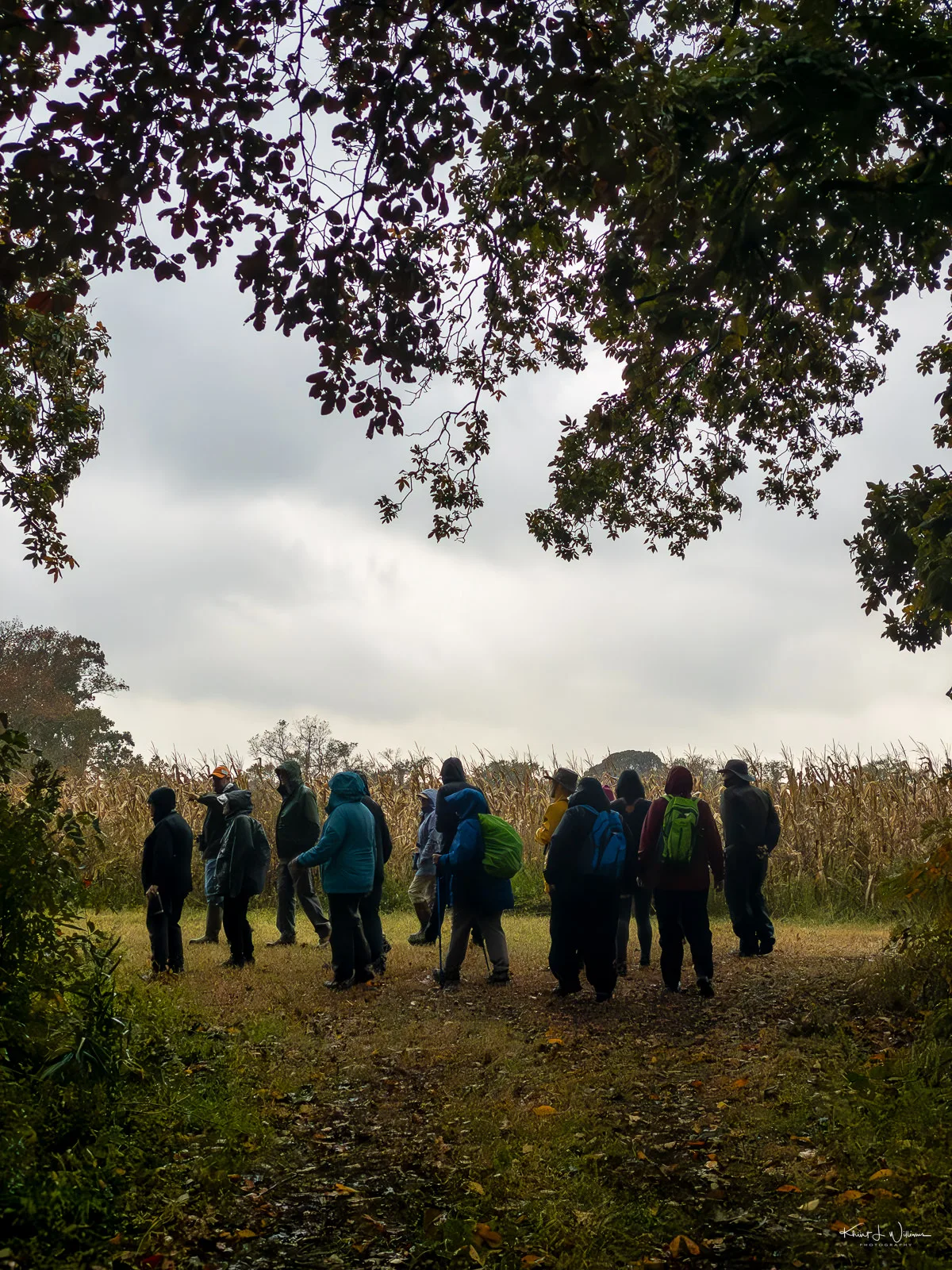
The birdwatchers had already gathered in the parking lot. Our knowledgeable guides, Karen Thompson, BJ Pinnock, and Bill Boyle, introduced themselves and shared their hopes for the field trip despite the less-than-ideal weather. Among the binoculars-wielding birdwatchers, I felt like the odd one out as the sole bird photographer especially with my Fuji X-T3 and super telephoto XF150-600mmF5.6-8 R LM OIS WR hanging on a sling,. Bhavna patiently sat in the car, reading on her iPad in the rain-drenched parking lot, waiting for the walk to conclude.
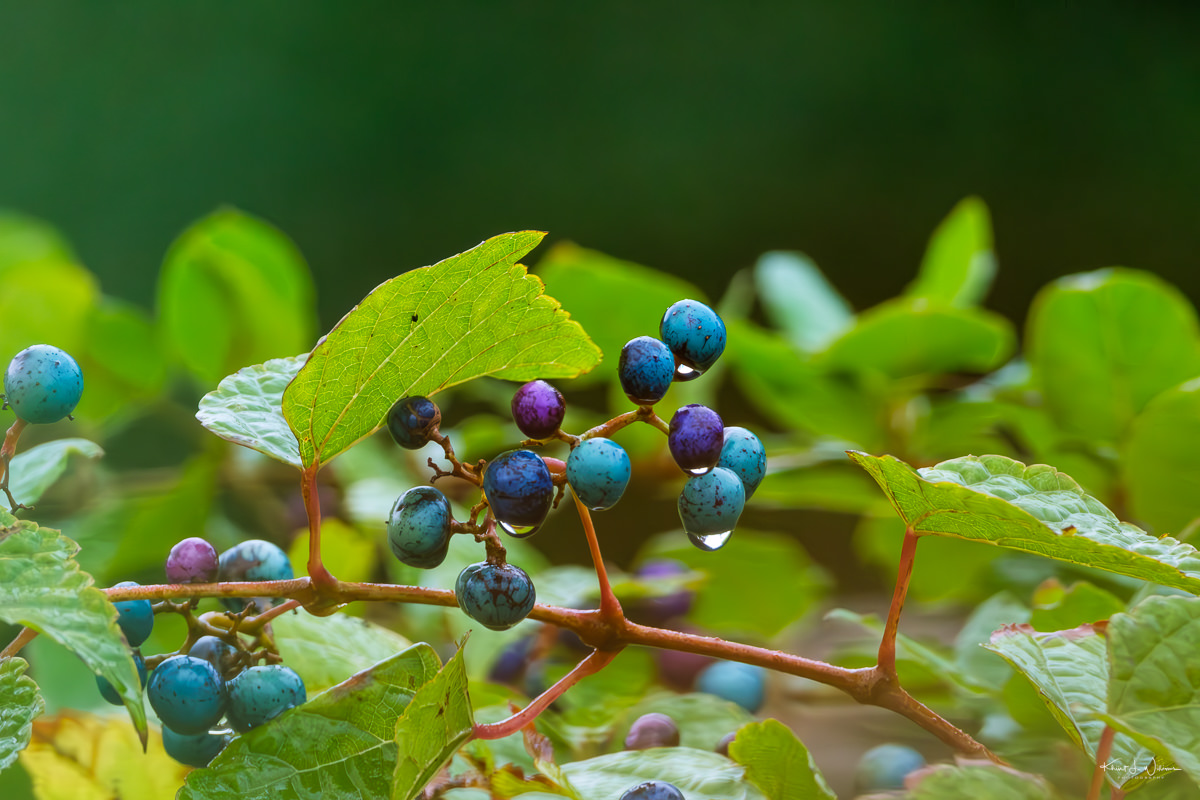
As we started on our birding adventure, it drizzled, a blanket of clouds hanging low in the sky. I felt anxious as memories of the disappointment from my last field trip to West Cape May filled my mind. Covering approximately half a mile, the Beanery offers an immersive natural experience. We explored the grounds and walked across grass and dirt trails that curved along field edges and through the woods.
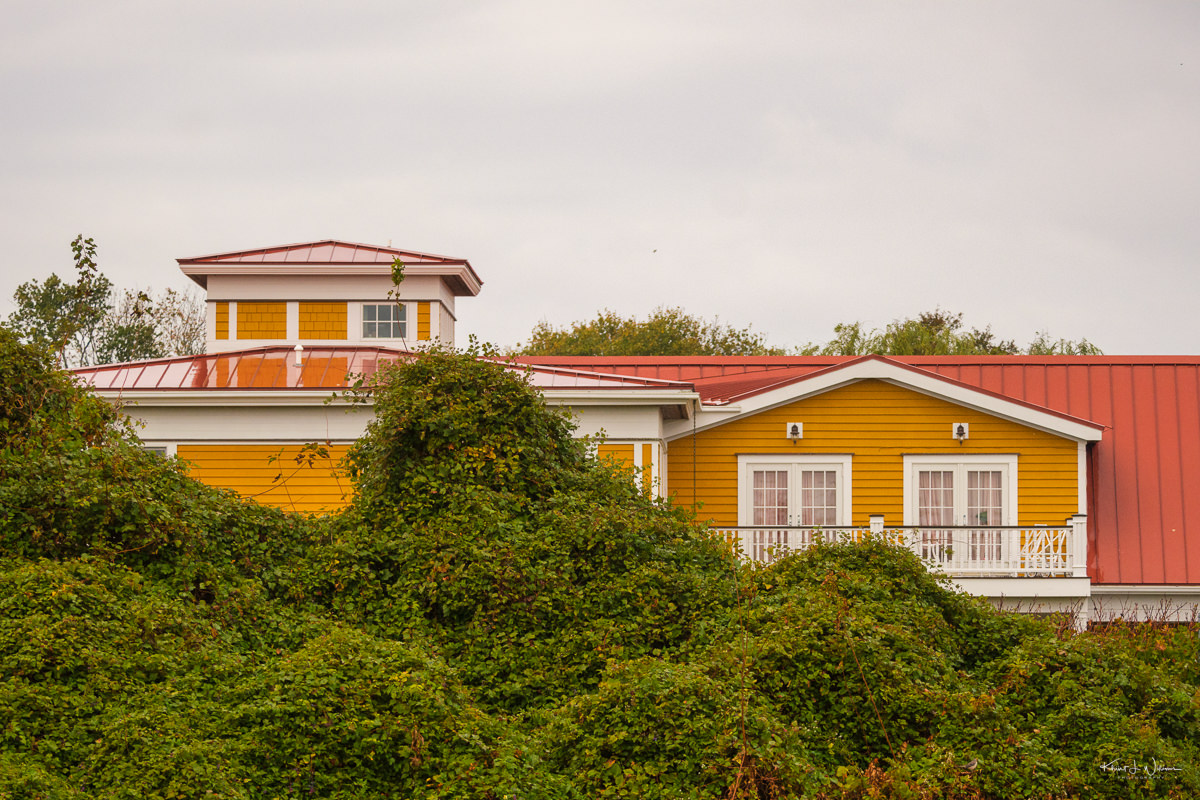
Photographing birds against the backdrop of the cloudy sky presented its own set of challenges, and capturing silhouetted photographs was different from what I had in mind. Unfortunately, the birds seemed to be hiding from the weather, and my options for "bird-on-branch" photographs were disappointingly scarce.
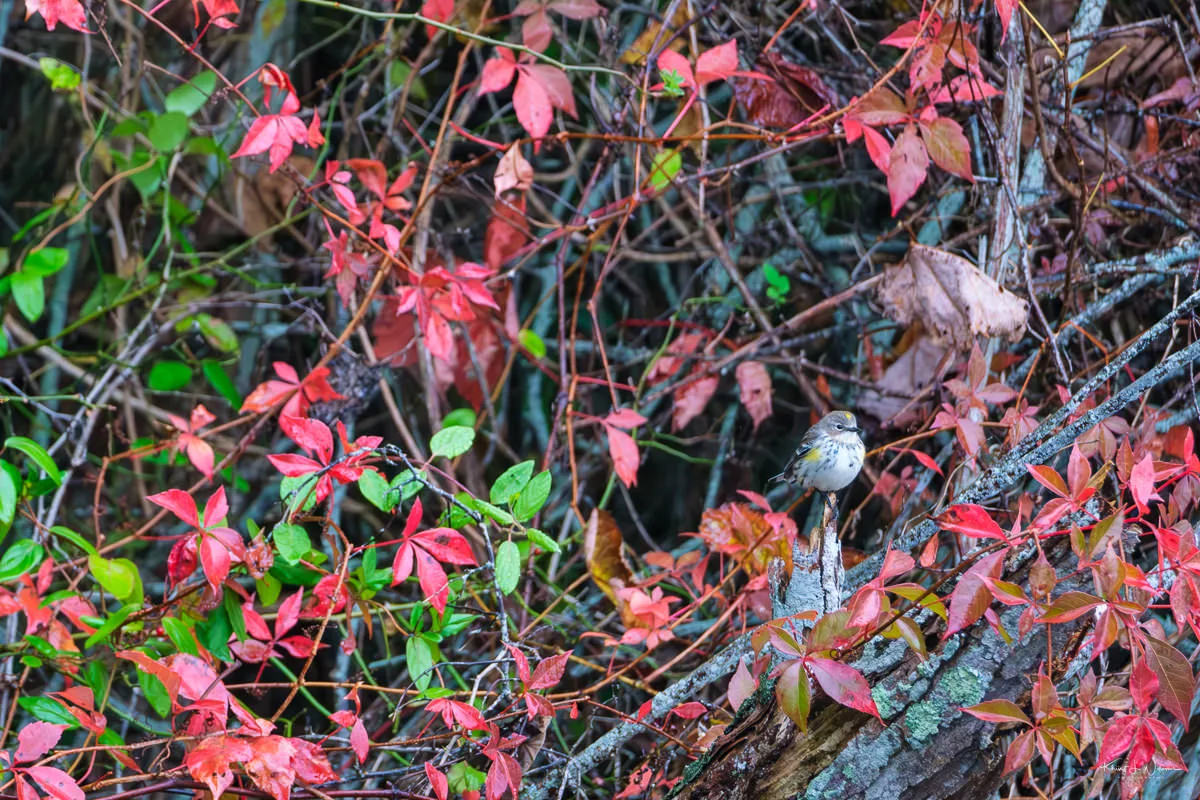
The grey sky loomed overhead throughout the walk, a constant reminder of nature's unpredictability. Frustration dampened my spirits, but I persisted, distracting myself from the cold and damp by engaging in friendly conversations with fellow birdwatchers about their favourite birds and sharing my photographs of warblers.
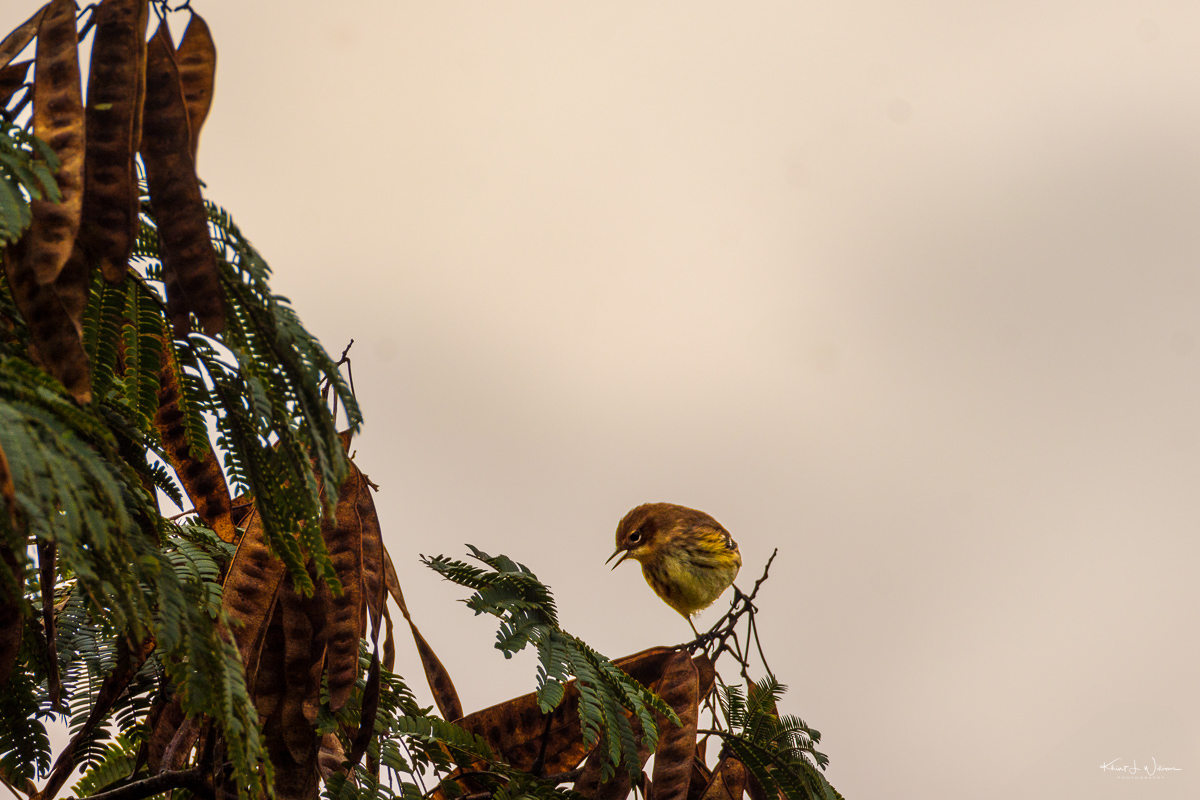
Towards the end of the field trip, the trail led us to a barn overlooking a large pond, and there, at last, I spotted some warblers. Several individuals were singing and hopping around the vines and branches of the trees. I was excited.
After photographing the warblers, we walked around to the far end of the pond, where a family of ducks were feeding.
By 9:30 AM, our walk had concluded, and my growling stomach redirected my thoughts to breakfast. Bhavna and I decided to dine at Dock Mike's, where a hearty brunch warmed our bodies and lifted my spirits.
According to the official tally, our group saw over 30 species of birds.
As we headed back home, I reflected on the experience. Though the day's bird photography experiences were mixed, the Cape May Fall Festival was a reminder that in bird photography, patience is essential, especially in challenging conditions.
